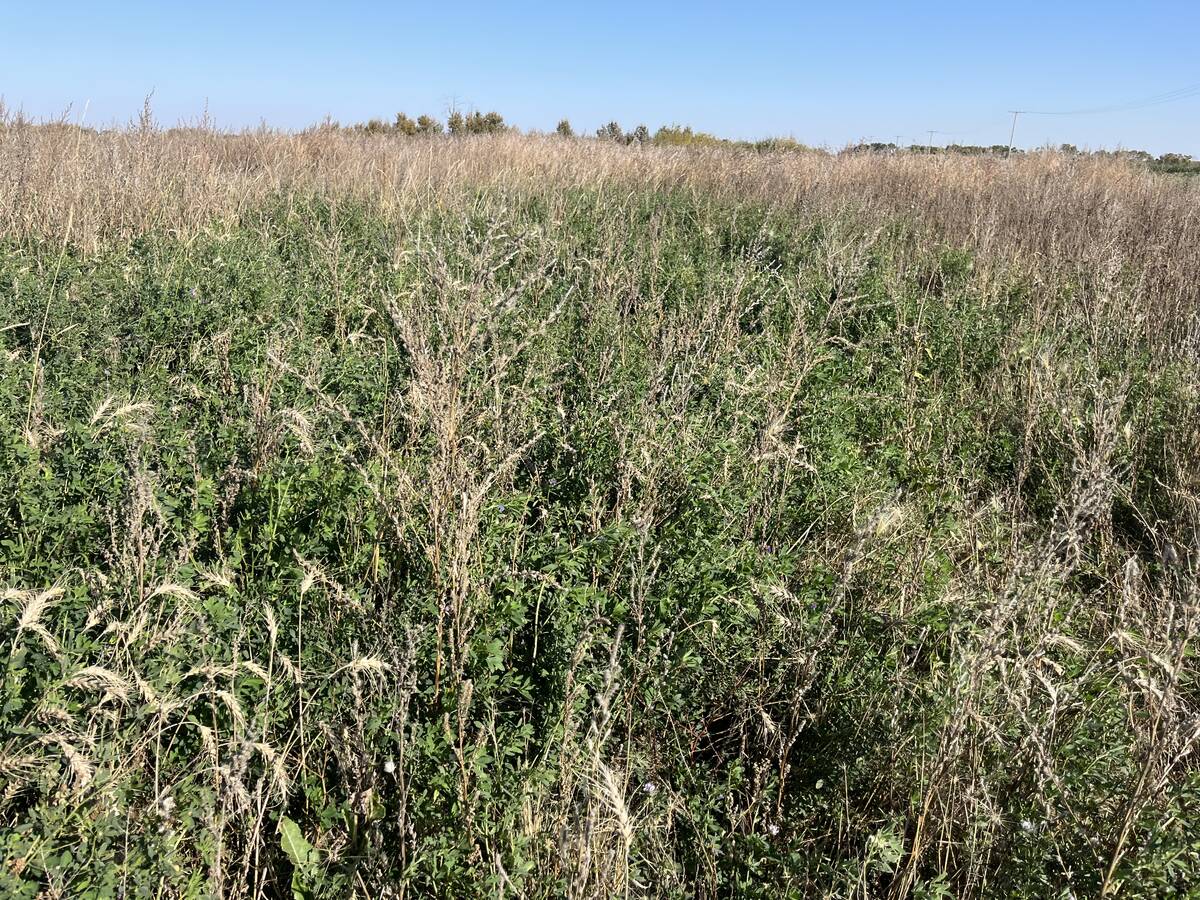HANNA, Alta. — Alberta grazing leaseholders may soon see a new rental rate formula.
A flat fee is proposed, with a tiered approach based on market prices. It will affect people who are grazing cattle on provincially owned lands.
Ranchers in southern Alberta currently pay a base rate of $2.30 per animal unit month, while those in the north pay $1.30 per AUM.
“It is not necessarily an adjustment upward. In cases where the markets are down, (the new fee) will be less in rentals than it is currently,” said Amanda Miller, provincial range management specialist with Alberta Environment.
Read Also

Dormant seeding forages frees up farmer time and gets ahead of weeds
Dormant seeding isn’t common practice and can appear daunting, but there are some techniques to give Manitoba farmers an edge
“These rates would be adjusted annually and they would change based on the price of cattle in the fall and the relationship to the purchase costs of cattle in the spring,” she said at the Alberta Grazing Leaseholders Association annual meeting in Hanna Feb. 22.
The formula considers the purchase of yearlings in the spring, gain on the lease during the grazing season and sale price in the fall. Producers would pay the base rate plus a calculated variable rent that equals the net revenue from the cattle market.
“We believe it provides a fair amount of profit sharing between grazing leaseholders and government,” she said.
Rental rate changes would be phased in over five years and all grazing disposition holders would receive a letter informing them of the changes.
Adjustments to the rates must be made through an amendment to the Public Lands Act and a ministerial order is required to implement them.
It will be reviewed in five years and costs will be surveyed every 10 years to ensure the formula is based on current costs.
The government and provincial beef organizations have been reviewing rents for years because rates have not changed since 1994. This most recent proposal is likely to go into effect in 2018.
Assignment fees paid for administrative costs will be a flat fee of $3,150. Renters continue to pay the property taxes and handle capital costs like fences, buildings or water delivery.
More information on the changes can be found at bit.ly/2mGhnX8















